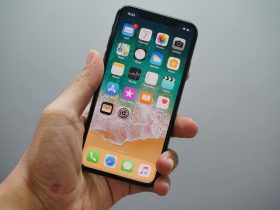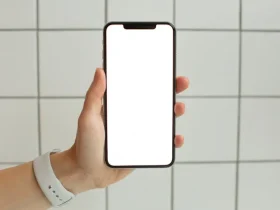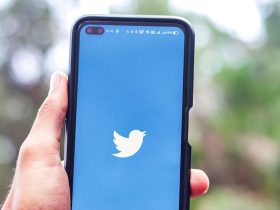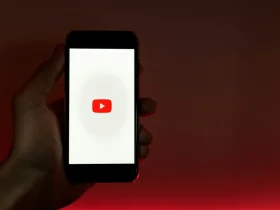Today Wi-Fi calls can now be made almost as quickly as normal calls. The notification indication will show an option for Internet Calls or Wi-Fi calling once you’ve connected to the Internet. Calls may be forwarded through a network service provider when the phone cannot connect to WiFi.
You can maintain contact with your friends, family, coworkers, business partners, etc, without a phone line due to the aid of WIFI calling. You can access WiFi almost anywhere, whether at a hotel, your house, your place of business, or even a paid or free WiFi hotspot.
Despite these benefits, there are also some disadvantages of wifi calling. You should be aware of some of the drawbacks of WIFI Calling. This article has listed a few advantages and disadvantages of wifi calling, which will help you decide whether wifi calling is better than cellular or not.

Demonstrating WiFi Calling
When a call is made via wifi signals or wireless internet access as opposed to a traditional cellular phone network, this is referred to as wifi calling. The IEEE and the Wi-Fi Alliance have created a set of standards that control Wi-Fi.
The user interface for Wi-Fi calling is very similar to that of a regular phone call. You simply dial a contact number as you normally would. You can use all the standard features of wifi callings, such as three-way calling and speakerphone, just like you would on a regular phone call.
Everyone should take advantage of this amazing advancement developed in the mobile phone system. You can use your home broadband or WiFi hotspot to make WiFi calls even if there isn’t a mobile network nearby. Keep reading to find out the advantages and disadvantages of wifi calling.
Read Also: Do Alarms Go Off During a Call?
Advantages of WiFi Calling
Let’s start off by first learning some of the benefits of WiFi calling to help you decide the difference between ‘wifi calling vs cellular.’ Everything depends on communication, whether it’s for personal or professional reasons. When it comes to outdoor issues like poor cell service or underground dwellings, WiFi calling can come in handy. Some of the advantages of WiFi calling are:
1. Free Calls
One of the most significant advantages of using WiFi calls is that it’s free. As long as you have a stable internet connection and a mobile phone which supports wifi calling, you can call anyone from across the world.
You can immediately make free calls when there is robust wifi connectivity. This means you can use your wifi connection to make a call even if you haven’t paid for traditional phone service. Since you can make a phone call anyplace freely, it does not even ask for any additional fees.
2. Outstanding Indoor Connectivity
A broadband connection typically includes a larger bandwidth and support for numerous simultaneous connections. However, a WiFi connection works practically anywhere, including the basement of your building. A WiFi extender can connect your device from anywhere in the house so that your connectivity is never interrupted.
3. Improved Voice Quality
Even if your location doesn’t experience any network or call drop issues, you might never be aware of the problems at the receiving end. This indicates that you still need clarification about the signal or voice call quality.
On the other hand, because VoWiFi or WiFi calling uses an internet connection, you can benefit from higher-quality conversation.
4. Quick Connection
WiFi Calling is comparatively quicker and error-free when compared to traditional calling. You can communicate with the recipient without wasting time. One of the standout advantages of WiFi Calling, especially in an emergency, is this.
You can activate your WiFi hotspot and connect your call immediately to send your message if you’re having trouble with cellular coverage.
5. No Additional Setup Needed
You may get a tonne of solutions to do your tasks by searching for an app in the Google Play Store. You don’t need to install additional programs in order to make calls, which is one of the potential benefits of WiFi calling.
Everyone uses Messenger applications to connect, so you only need one of those to make video or phone calls practically everywhere.
Disadvantages of WiFi Calling
With every good, there comes bad. Sadly, this is also the case with WiFi calling. You might have faced various issues when using cellular data to call someone, for example, the calling restriction issue, which could make you wonder, What do calling restrictions mean?’
Similarly, with wifi calling, there are some disadvantages as well, which are listed below.
1. Limitations When Travelling
WiFi calling is not available in places where there is no internet access. The FCC estimates that 6% of Americans cannot access internet service at threshold speeds. This increases to one-fourth of the population in rural regions.
Most US providers enable Wi-Fi calling, including AT&T, Verizon, Sprint, and T-Mobile. Your Wi-Fi contacting services might not function properly in other nations if you travel to them. You could occasionally experience data restrictions or network constraints when traveling abroad.
2. Weak Signal Strength
Multiple connections at public WiFi hotspots sometimes cause network overload, which slows down the network performance. Poor connection is typical at hotels, airports, colleges and universities, stadiums, and even libraries. Additionally, a bad connection might lead to more connection dropouts and worse audio and video.
3. Expensive Data Price
Data costs could put an additional strain on your budget depending on where you live because they vary from country to country. Equatorial Guinea, the Falkland Islands, Saint Helena, So Tomé and Principe, and Malawi will likely charge you extra for data usage.
Given the situation, it would be in your best interest to choose a classic calling system since 1GB of data costs between $25 and $50.
4. Lack of Wi-Fi Calling Support
To connect to people using data, you must have a smartphone with built-in WiFi calling functionality. Your smartphone might not have this function built in if you are using an old version of Android or iPhone. However, you might also want to confirm whether the carrier offers these functions or not.
5. Changing From Mobile Network to WiFi
Another drawback of WiFi calling is that if you’re on a call while in motion and your WiFi connection is lost, your phone may hang up the conversation and attempt to connect to a cellular network. Depending on your plan, this might result in additional costs.
The above-listed advantages and disadvantages of wifi calling should help you decide which one is better ‘wifi calling vs cellular calling.’
Related: What is meant by Cancelled Call?
Should WiFi Calling Be On or Off?
You might want to turn off your cellular service if you have a weak mobile signal. You’ll be able to keep the battery in your phone longer. Moreover, if your cellphone is not linked to any wi-fi network, shut off your wifi because it will save your battery’s life from draining. However, if you want to find out how to enable wifi calling, keep reading.
It’s pretty easy to enable WiFi calling on your smartphone. It is, however, device-specific, with certain variations based on your carrier. On more recent handsets, all significant carriers presently enable WiFi calling.
Activating WiFi on an Android Phone
WiFi calling can be activated on Android phones by following the simple steps below.
- Select Network and Internet under Settings.
- Next, pick a mobile network.
- To access Advanced, scroll below.
- Turn on Wi-Fi calling under the calling option.
- You may also use the search tool to find this setting. However, keep in mind that Android devices can vary based on providers.
Simply reverse the aforementioned procedure to return to using cellular service if you’re not sure you want to start the process and would like to turn WiFi calling off.
Activating WiFi on an iPhone
Follow these steps to learn how to enable WiFi calling on iPhones:
- From the home screen, select settings.
- Select Cellular by tapping on it.
- Choose Wi-Fi calling under your carrier.
- You have two options on this screen: to enable WiFi calling generally or to prioritize WiFi while roaming.
- Once chosen, your carrier name will be followed by WiFi in the upper left-hand corner of your screen.
Apple specifies that you need “an iPhone 5C or later on a compatible carrier” if you want to make WiFi calls.
Related: Do iMessage Deliver When Phone Is Dead?
FAQs
Do You Get Charged for WiFi Calling?
No. Wi-Fi calls and texts to US numbers don’t use our cellular network and don’t eat up any of the data allotted in your mobile plan. The Wi-Fi network you are now connected to might, however, impose an access price.
Why Do We Use WiFi Calling?
Most importantly, provided there is an internet connection, it enables communication from even the most remote locales. That means that regardless of your location—indoors, outdoors, or even underground—you may make phone calls and send messages.
Is WiFi calling bad for your phone?
Your cell provider encrypts your voice when you make a call. This occurs when you use a Wi-Fi connection, allowing such calls completely secure regardless of whether the Wi-Fi network is private or password-protected.
How do I know if I’m on Wi-Fi calling?
1. Navigate to your settings
2. Go to more connection settings under connection
3. You can see the Wi-Fi calling options
Should I leave Wi-Fi Calling on all the time?
Whether you should leave Wi-Fi Calling on all the time depends on your specific situation and preferences. Wi-Fi Calling can be a useful feature in certain scenarios, but there are also some considerations to keep in mind.
Is Wi-Fi Calling a security risk?
Wi-Fi Calling, like any technology that relies on network connections, comes with certain security considerations. While it is generally considered safe and secure, there are some potential risks that users should be aware of:
1. Eavesdropping: When making calls over a Wi-Fi network, there is a theoretical possibility that malicious actors with the right tools and skills could intercept and eavesdrop on your conversations. However, modern Wi-Fi Calling implementations typically use encryption protocols to protect the call data, making it difficult for eavesdroppers to decipher the content.
2. Wi-Fi Network Security: The security of your Wi-Fi Calling depends on the security of the Wi-Fi network you are connected to. If you are on a public or unsecured Wi-Fi network, there is a higher risk of potential security breaches. Always try to use trusted and secure Wi-Fi networks, especially for sensitive activities like making calls or accessing personal information.
3. Device Security: As with any communication service, the security of your Wi-Fi Calling can also be affected by the security of your device. Make sure to keep your phone’s operating system and apps up to date to minimize vulnerabilities that could be exploited.
4. SIM Card Cloning: In some rare cases, attackers could attempt to clone your SIM card to hijack your Wi-Fi Calling feature. This type of attack is typically more challenging and requires physical access to your SIM card. Using strong PIN codes or passwords for your SIM card can mitigate this risk.
5. Man-in-the-Middle Attacks: In certain scenarios, attackers could attempt to position themselves between your device and the Wi-Fi Calling servers, intercepting and potentially altering the communication. Once again, encryption protocols should help mitigate this risk.
Conclusion
WiFi calling service is a recent, less expensive, and more trustworthy service. As more people switch to using this technology for both personal and professional purposes, the scenario is predicted to change.
You can have an idea of what needs to be done to fix the potential issues at your end as well as the operator’s if you are aware of the pros and downsides of WiFi Calling technology which we have listed in this article. Overall, wifi calling is a great feature and a big enhancement in the digital world.
Related:










Leave a Reply